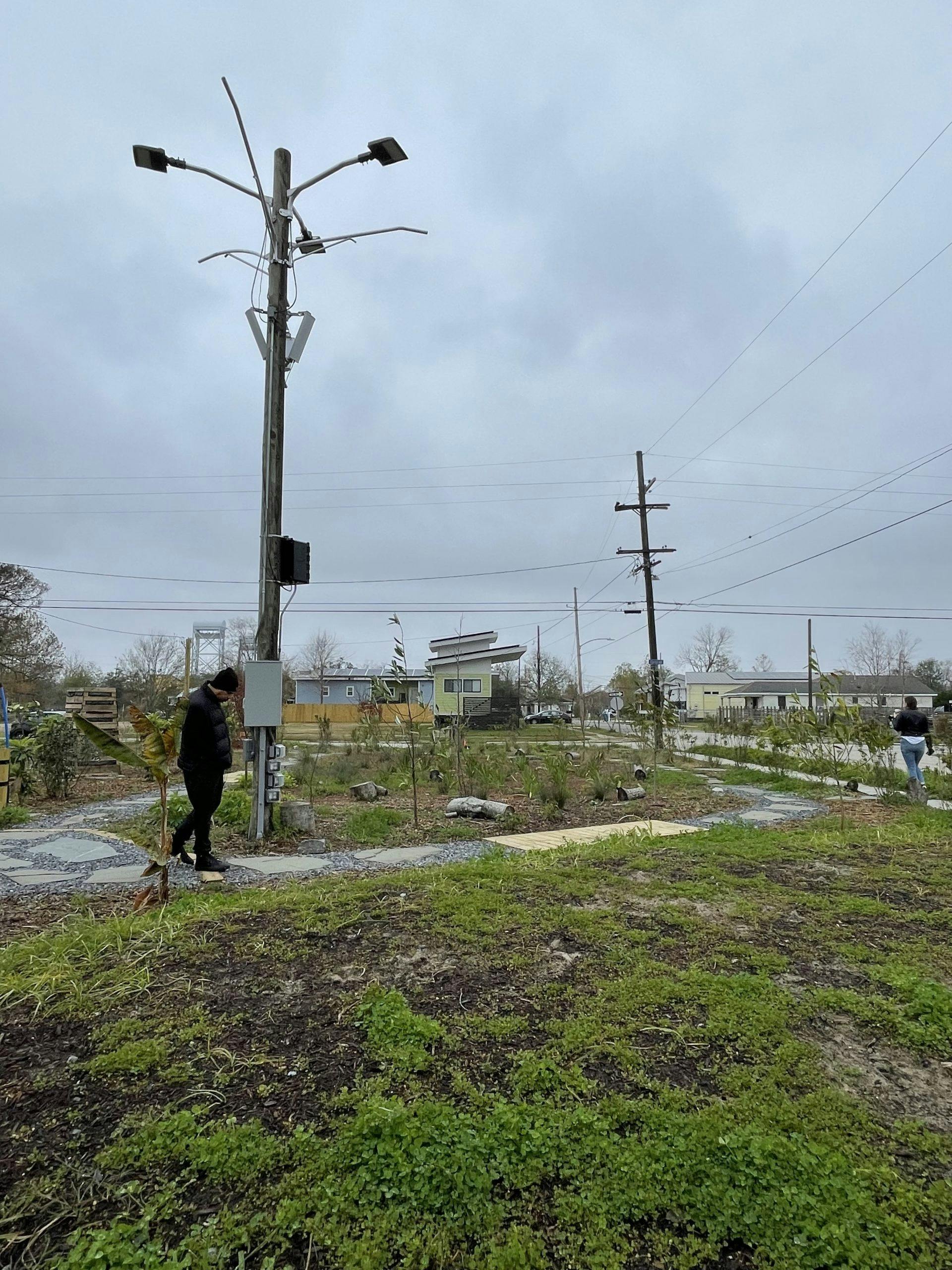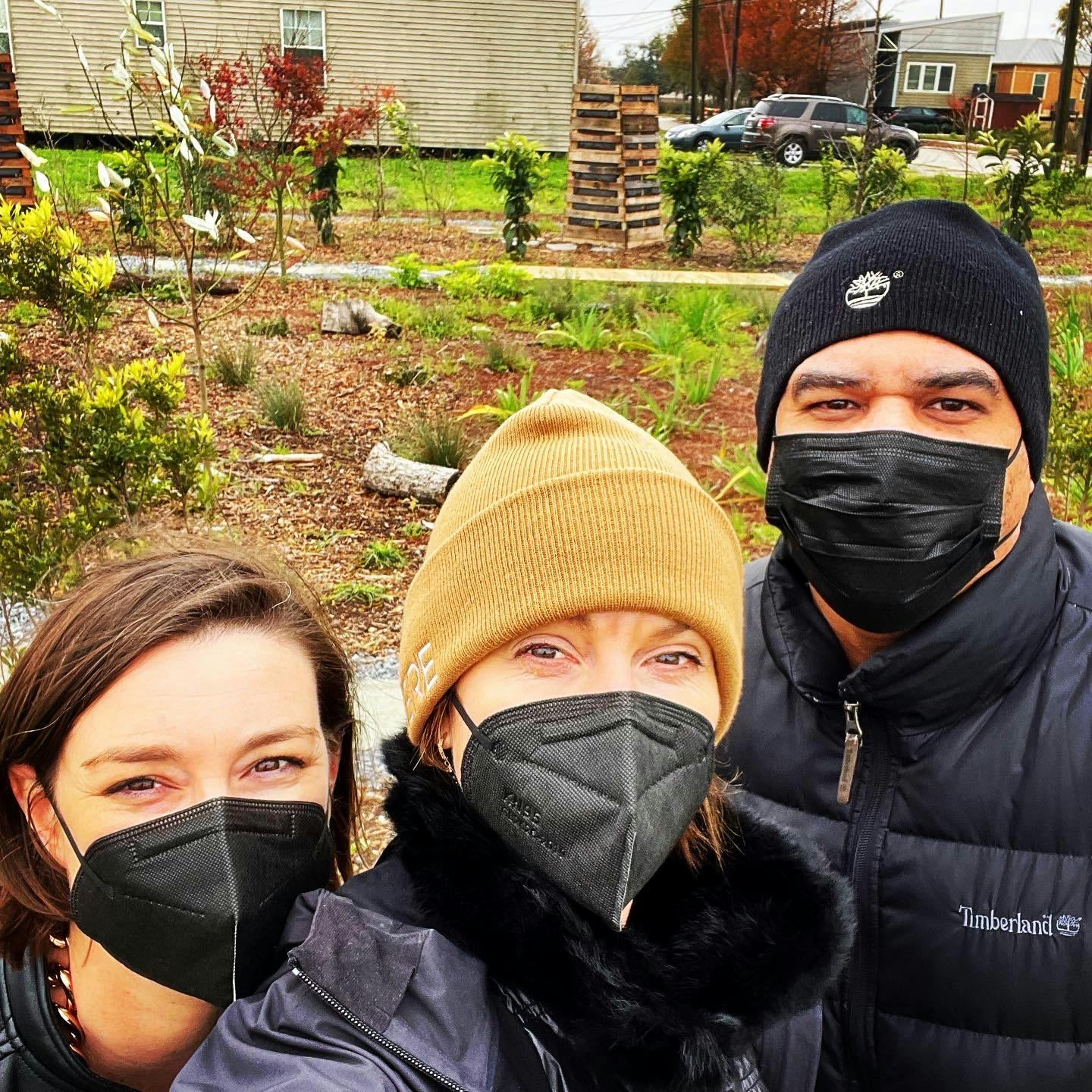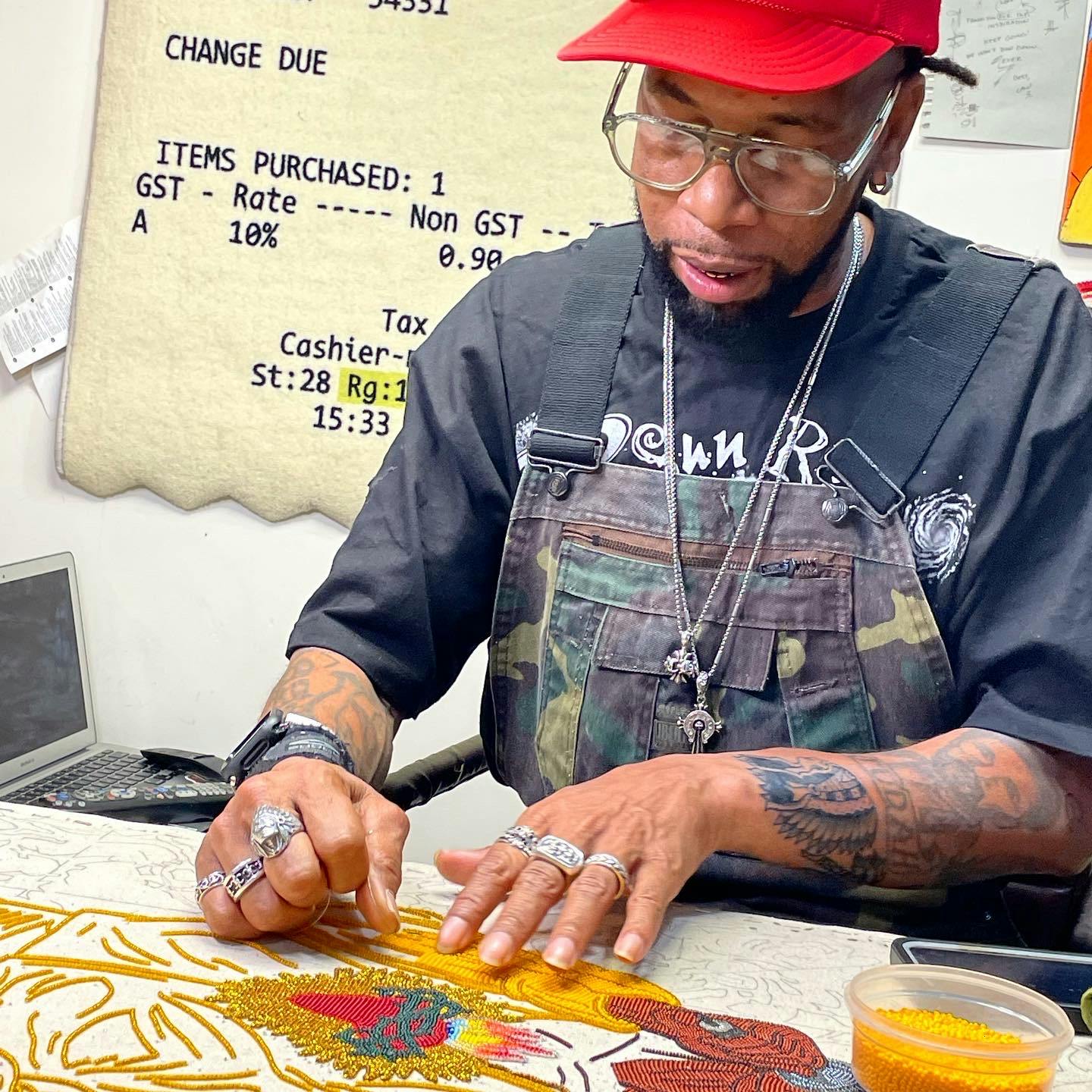Prospect New Orleans, a triennial citywide contemporary art exhibition and the young, scrappy American cousin to more established European exhibitions like documenta and Skulptur Projeckte, recently wrapped its fifth iteration with an exhibition as in flux as these pandemic times. Now + There founder/Executive Director Kate Gilbert and Curator Leah Triplett Harrington visited during Prospect.5’s final week to observe how artists were celebrating New Orleans’ complex geopolitical position, grappling with its peoples’ past, and inviting visitors to help imagine tomorrow, today. With an eye towards collaboratively building a contemporary art festival in Boston, we call for more overt community engagement from visiting artists while lauding the vision and tenacity of each and every one of Prospect.5’s creators and funders.
“Yesterday We Said Tomorrow” was all about the future. As we traversed New Orleans East to Tremé to Bywater and Uptown, the most powerful work we encountered acknowledged the traumas of the past while heralding new futures.
Exploring NOLA by way of the exhibition’s map, we saw how Los Angeles-based curators and Prospect’s co-artistic directors, Diana Nawi and Naomi J. Keith, collaged artists, artworks, and institutions. Their approach was less conductor, more jazz improvisation, embracing the possibilities of unexpected juxtapositions of site context and artistic voice. With the evident care of their curation, you might think that Nawi and Keith are natives or long-time residents of the city. But our experience of New Orleans through Prospect made clear how they used their outsider position as an advantage to contextualize the local within the international.
The morning of Saturday, January 22, 2022, the unveiling of Simone Leigh’s Sentinel (Mami Wata) offered the sharpest example of these forces at play. Erected at the site where a bronze statue of Robert E. Lee stood from 1884 to May 19, 2017, Nawi and Keith purposefully placed Sentinel (Mami Wata), at the base of the soaring plinth so as to be approachable, a gesture that refuses the hegemony of white supremacy and its physical manifestation in elevated monuments like the Lee that previously lorded over downtown New Orleans.
But the sculpture’s physical presence isn’t what moved us to tears that cold morning. It was hearing from local activists, artists, and poets about what Leigh’s work meant to them. That the spoon represented Zulu culture and its close relationship to New Orleans, that the title referenced its citizens’ guardianship of this space, and how “Mami Wata” is a water spirit that guards Africa and the African diaspora that straddles the past and present. Community leader Sula Spirit and artists, Sunni Patterson and Sha’Condria “Icon” Sibley, blessed the base of Leigh’s statue with water and spoke to the crowd about the importance of what Mami Wata means to them. They expressed how their grandmothers, mothers, and aunts contended with the Lee statue and the supremacy it upheld, their words reverberating off the city buildings that, for years, stood in his shadow. Their audience was mostly bicoastal curators and collectors, people in positions of power, drawn to Leigh and Prospect’s artistic directors, but who nevertheless experienced the power of local voices.
These local voices are the ones we still hear as we reflect on our weekend at Prospect. In particular, the words of Nial, a three-generation New Orleanian and our Uber driver to Kevin Beasley’s much-talked-about project at 1741 Forstall Street in the Lower Ninth Ward. After we told him about Prospect, Nial got out of the car with us at the once empty lot, now filled with native plant species, compost bins, and a tall Wifi tower. Nial was open to Beasley’s project of investment, but skeptical nonetheless. “We are not an art project,” he declared as he pointed out the “Brad Pitt” houses that neighbor the lot. Meaning, New Orleans isn’t just empty, it’s a mellifluous place that calls for deep investment.
This sentiment was also articulated by Big Chief Demond Melancon, a Black Masker who leads the Young Seminole Hunters of the Ninth Ward. Melancon and his studio were not on the Prospect map, but we were fortunate to visit his Eighth Ward studio, where he lives and works with his wife, Alicia. Melancon has beaded and created fantastical suits for Mardi Gras all his life, but only declared himself an artist six years ago after gallerist Arthur Roger saw his work and invited him to show in his Julia Street gallery.
Looking at Melancon’s mesmerizing, painstakingly crafted beadwork—and thinking of Leigh’s Sentinel—we were reminded of Stephen Hamilton and his weaving-based work to uplift African narratives by inserting them into Boston Public School’s (BPS) curriculum. Hamilton came through N+T’s Public Art Accelerator in 2018, and his project’s unveiling in the Bolling Building (with spoken words, dance, and drumming) still inspires us as we work with artists local and otherwise. Hamilton and his peers need an active support system of galleries, collectors, and funders to continue and evolve their work.
Prospect was conceived in 2006, post-Katrina, as a city revitalization project and opened two years later. The triennial attracts at least 100,000 visitors, contributes $10 million to the economy (including $800,000 in municipal and state tax revenue), and brought us that much closer to understanding the complicated soil that is New Orleans—the river-silted earth first home to the Chitimacha indigenous peoples, stained with blood and tears inflicted by European settlers on native and enslaved peoples, saturated with Sazarac and sweetness, reverberating with high notes of jazz, and home to the mournful-come-celebratory second line.
What are the layers of Boston’s soil that need to be unearthed, examined, and ultimately re-nurtured? Boston’s landmark institutions benefit from their founders’ early participation in chattel slavery and our steel and glass offices are often maintained by folx of color who must live an hour away from downtown to afford their dwellings. Meanwhile, colonial and American Revolution narratives overshadow the strong Caribbean influence that has long made Boston a more joyful and creative place. How can public exhibitions of contemporary art cultivated by fresh perspectives invigorate curiosity about our neighbors and help reimagine Boston’s narrative? And sooner than that tomorrow we keep putting off?
The recent recipients of the Now + There Public Art Accelerator program will show us how. So too will local art institutions like the MFA, ICA, Isabella Stewart Gardner, the Greenway, and MIT List as they bring fresh perspectives from across the globe. Building a public art city takes dismantling oppressive narratives, breaking down silos, shaking things up (maybe another Joy Parade?), and being more open to collaboration and the cross-pollination of ideas—among Bostonians and outsiders who can help us envision a more equitable future.
Prospect.5 was on view across New Orleans from October 23, 2021 through January 23, 2022.
This article was updated on 2/2/2022 to include the names of the three speakers at the ceremony for Sentinel.





